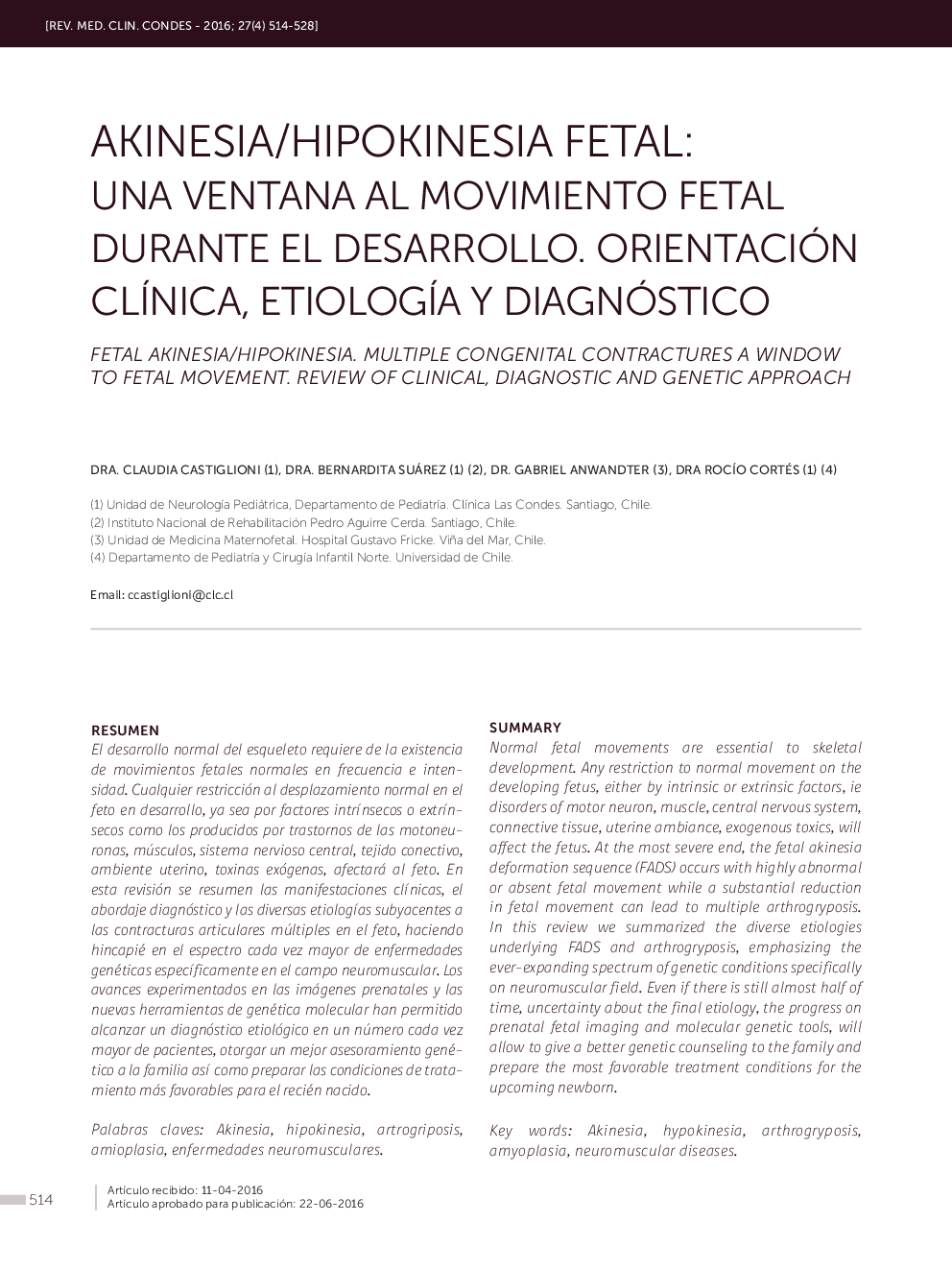| کد مقاله | کد نشریه | سال انتشار | مقاله انگلیسی | نسخه تمام متن |
|---|---|---|---|---|
| 3829913 | 1408943 | 2016 | 15 صفحه PDF | دانلود رایگان |
RESUMENEl desarrollo normal del esqueleto requiere de la existencia de movimientos fetales normales en frecuencia e intensidad. Cualquier restricción al desplazamiento normal en el feto en desarrollo, ya sea por factores intrínsecos o extrínsecos como los producidos por trastornos de las motoneuronas, músculos, sistema nervioso central, tejido conectivo, ambiente uterino, toxinas exógenas, afectará al feto. En esta revisión se resumen las manifestaciones clínicas, el abordaje diagnóstico y las diversas etiologías subyacentes a las contracturas articulares múltiples en el feto, haciendo hincapié en el espectro cada vez mayor de enfermedades genéticas específicamente en el campo neuromuscular. Los avances experimentados en las imágenes prenatales y las nuevas herramientas de genética molecular han permitido alcanzar un diagnóstico etiológico en un número cada vez mayor de pacientes, otorgar un mejor asesoramiento genético a la familia así como preparar las condiciones de tratamiento más favorables para el recién nacido.
SUMMARYNormal fetal movements are essential to skeletal development. Any restriction to normal movement on the developing fetus, either by intrinsic or extrinsic factors, ie disorders of motor neuron, muscle, central nervous system, connective tissue, uterine ambiance, exogenous toxics, will affect the fetus. At the most severe end, the fetal akinesia deformation sequence (FADS) occurs with highly abnormal or absent fetal movement while a substantial reduction in fetal movement can lead to multiple arthrogryposis. In this review we summarized the diverse etiologies underlying FADS and arthrogryposis, emphasizing the ever-expanding spectrum of genetic conditions specifically on neuromuscular field. Even if there is still almost half of time, uncertainty about the final etiology, the progress on prenatal fetal imaging and molecular genetic tools, will allow to give a better genetic counseling to the family and prepare the most favorable treatment conditions for the upcoming newborn.
Journal: Revista Médica Clínica Las Condes - Volume 27, Issue 4, July 2016, Pages 514–528
